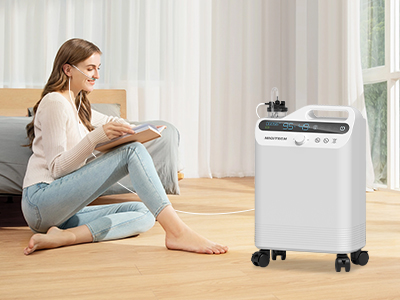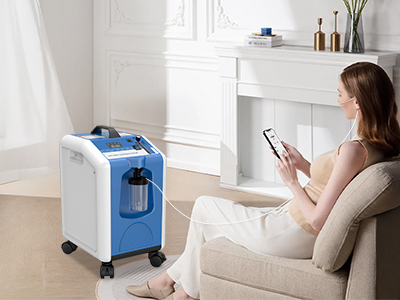05 May 2025
Discharge day. That beautiful, long-awaited word comes with both relief and a sliver of anxiety. The sterile hum of the hospital gives way to the familiar comforts of home—but this time, you’re not coming back alone. You’re bringing oxygen therapy with you. While it might seem intimidating, transitioning from hospital-based oxygen support to home therapy marks a powerful shift: from passive patient to proactive self-manager.
The key lies in preparation, knowledge, and embracing a new normal—where every breath is supported, protected, and valued.

Understanding Your Prescription: What the Numbers Really Mean
Oxygen prescriptions aren’t just arbitrary figures. They’re finely calibrated lifelines. Whether you’re told to use 2 liters per minute (LPM) continuously or 3 LPM during exertion, those numbers carry clinical precision tailored to your physiology.
Delivery mode matters too. Continuous flow delivers a steady stream of oxygen, ideal for certain chronic conditions. Pulse-dose systems, meanwhile, conserve oxygen by syncing delivery with your inhalation. Understand your prescription like a treasure map—every detail leads to better breathing and greater safety.
Choosing the Right Equipment for Home Use
Not all oxygen devices are created equal. Stationary concentrators offer reliable oxygen generation for home use, humming dutifully in the corner like a faithful pet. Portable concentrators, on the other hand, grant freedom of movement and are perfect for errands, walks, or travel.
Additional tools—humidifier bottles, nasal cannulas, oxygen masks, extension tubing—serve to fine-tune your therapy. Choosing the right combination is less about luxury and more about enhancing compliance, comfort, and quality of life.
Coordinating with Healthcare Providers and Oxygen Suppliers
Before you set foot outside the hospital, your care team should already be drafting a post-discharge blueprint. Respiratory therapists, discharge planners, and durable medical equipment (DME) providers work behind the scenes to ensure a seamless transition.
Ask questions. Clarify delivery dates. Get trained before leaving the hospital—know how to power up your equipment, silence alarms, and read oxygen saturation with a pulse oximeter. This is more than logistics. It’s the architecture of your next chapter.
Preparing Your Home for Oxygen Therapy
Your home now doubles as a respiratory care hub. That means safety and accessibility come first. Remove flammable materials—candles, aerosol sprays, and smoking paraphernalia—from the immediate vicinity of your oxygen setup.
Choose a well-ventilated area for your main concentrator. Tidy up tripping hazards like loose rugs or wandering cords. Secure tubing along walls or with tubing clips to avoid foot entanglements. Think of this as feng shui for lung health—strategic, soothing, and life-enhancing.

Educating the Care Circle: Everyone Plays a Part
Oxygen therapy doesn’t happen in a vacuum. Spouses, children, roommates—even nosy neighbors—can play valuable roles in maintaining your respiratory well-being. Everyone should know the basics: how to turn the machine on and off, clean components, and recognize signs of distress.
Create a communication plan. Post emergency contacts on the fridge. Keep instructions in a visible spot. When everyone’s informed, you’re not just breathing easier—you’re living smarter.
Daily Routines and Lifestyle Adjustments
Integrating oxygen therapy into daily life means making thoughtful tweaks, not overhauling everything. Sleeping with a nasal cannula may feel strange at first, but soft pillows and well-placed tubing can improve comfort dramatically. For bathing, use extended tubing or take advantage of portable tanks—just remember, water and electricity are eternal frenemies.
Going for a stroll? Carry a lightweight portable oxygen concentrator. Hosting friends? Keep your concentrator in a separate room to minimize noise. Oxygen therapy isn’t an obstacle—it’s a sidekick that keeps you moving forward.
Handling Emotional and Psychological Changes
There’s a silent side to oxygen therapy: the emotional weight it carries. Feelings of vulnerability, frustration, or even grief may surface. That’s natural. You’re adjusting to a visible marker of a medical condition—and that visibility can spark complex emotions.
But support is everywhere. Counseling, peer support groups, mindfulness apps, and even journaling can help recalibrate your mental landscape. You are not defined by your equipment; you are defined by your resilience and how you rise, breath by precious breath.
Emergency Preparedness and Backup Plans
What happens if the power goes out? If you’re using an electric concentrator, a blackout could cut off your oxygen source. That’s why backup oxygen tanks—preferably filled and easily accessible—are non-negotiable.
Keep batteries charged for portable concentrators. Know where the nearest emergency services are. Build a kit: extra cannulas, masks, extension tubing, a flashlight, batteries, and copies of your oxygen prescription. Planning for the worst ensures you breathe calmly through anything.
Conclusion: Redefining Independence with Every Breath
Home oxygen therapy is not a limitation. It’s a liberation. With each inhale, you’re reclaiming autonomy, pushing boundaries, and writing a new script—one rich with potential and perseverance.
Transitions are rarely effortless, but with preparation and the right mindset, they become transformative. So take that first step. Breathe in. Move forward. Home is ready—and so are you.
Keywords: oxygen therapy
Originally published 05 May 2025, updated 05 May 2025.